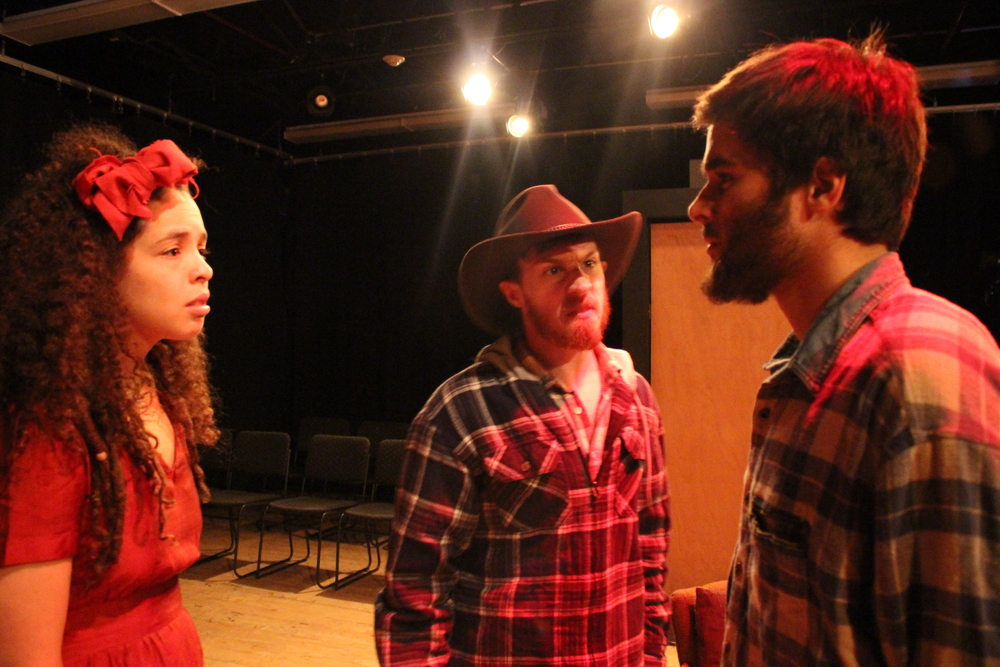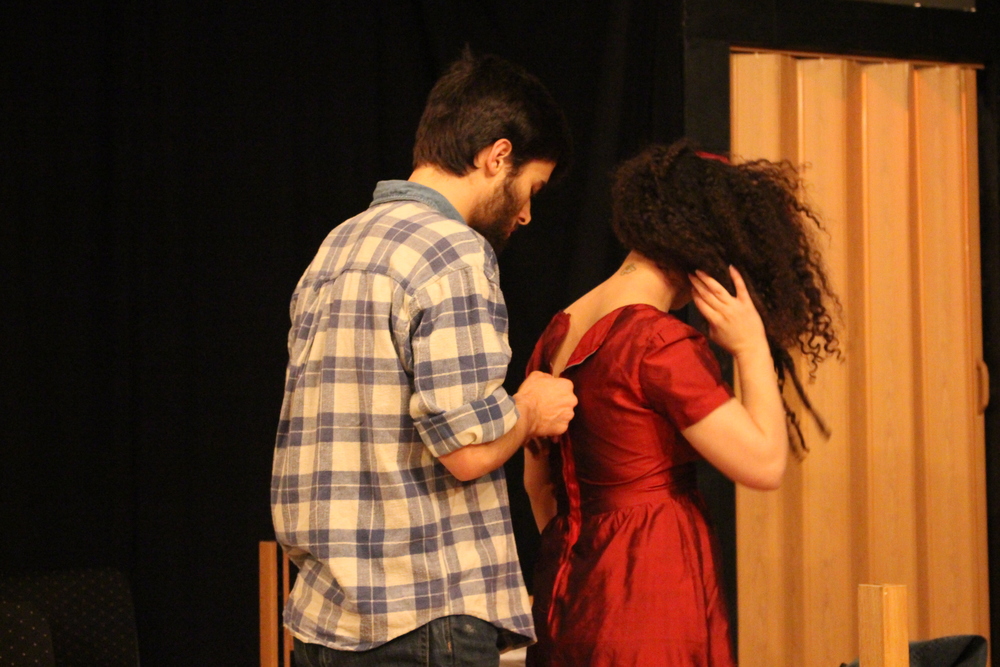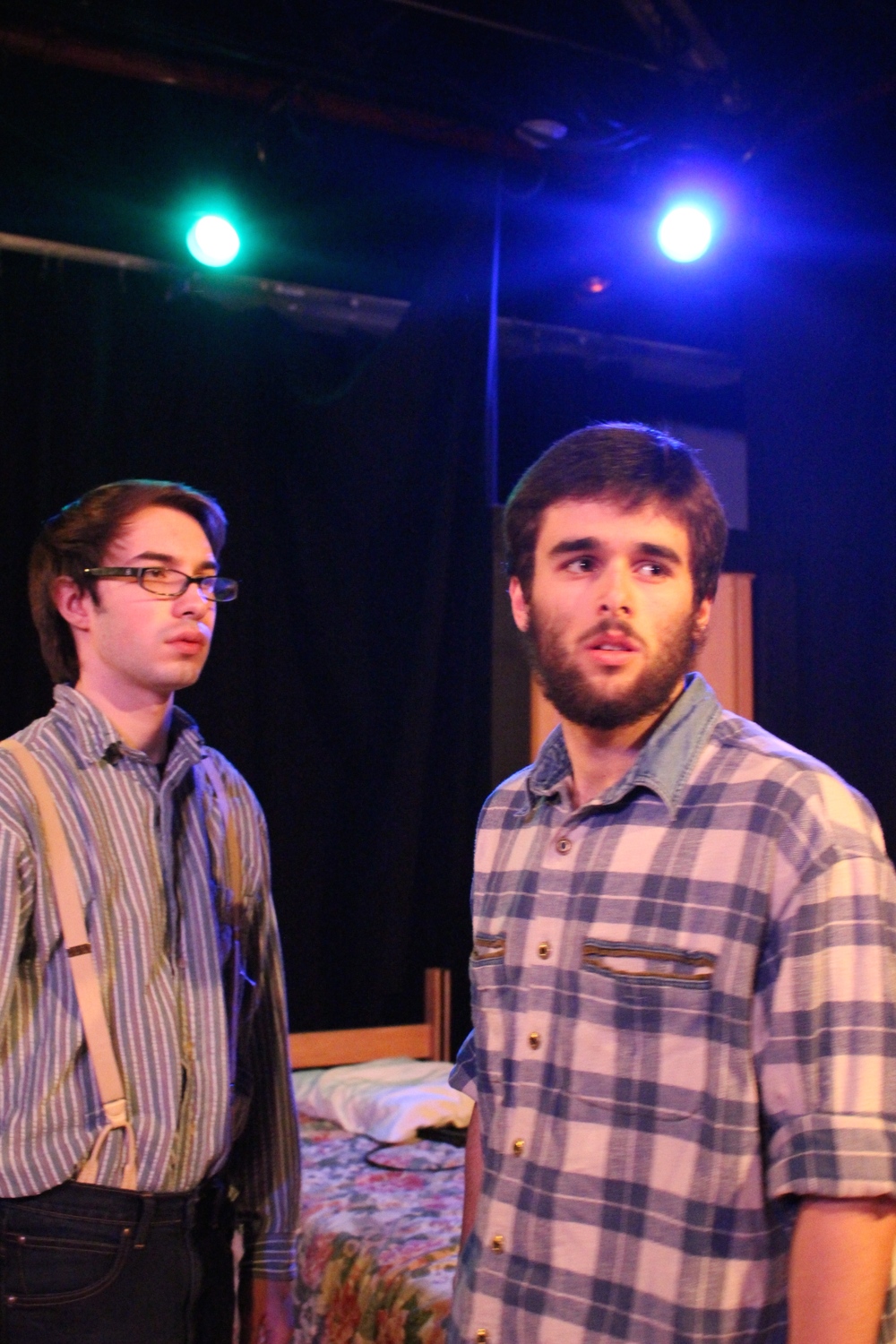
The Ultimate Love-Hate Relationship
By: Gabrielle Collette ’18
Director of Fool for Love Alexandra Scordato ’15 shares: “I first read this play last summer, and I fell in love with it immediately. Sam Shepard is an incredible playwright.” Thanks to the brilliant work done by the cast and crew, a multitude of audience members also fell in love with Shepard’s play, the third workshop of the semester. Audience members rushed to grab their seats in the beautifully transformed studio the moment that stage manager Omi Furst ’18 opened the doors. Three of the characters—Eddie (Christopher Naughton ’17), May (Evy Yergan ’16), and the Old Man (Mark Thurner ’17)—were already on stage when the audience entered. May sat on a bed while Eddie faced away from her, fumbling with his gloves. Meanwhile, May sat with her head down, her hair draped over her face. The Old Man sat in a rocking chair, which was placed within the front row of the audience, reinforcing that he was not a part of the other characters’ immediate reality; he existed only in their imaginations.

The play begins with Eddie trying to evoke a response from May, who remains seated in the same closed-off position she began in. Suddenly, May grabs onto Eddie’s legs, refusing to let go and screaming for him to stay. She desperately wants to love Eddie, but too many obstacles stand in her way, as she knows Eddie was cheating on her with another woman, who she called “The Countess.” In addition, May and Eddie are half-brother and half-sister, a fact revealed later in the show. Eventually, May’s date, Martin (Joe Doino ’18) arrives. The power struggle between Eddie and Martin was quite evident in Scordato’s production. In fact, it often seemed to echo the relationship between a young Eddie and his Old Man.
Scenic designer Greer Duckworth ’15 created a set that embodied the themes of realism and magic in Fool for Love. The set was simple, and it clearly communicated the Mojave Desert motel room in which the show took place. The set was rustic and charming, though it hid a supernatural atmosphere. Another production element that brought the show to life was the lighting, designed by James Kuzio ’15. Whenever the characters would interact with the Old Man, the lights dimmed, indicating that the play had entered a state of fantasy. The Old Man would then speak—sometimes to the characters on stage, sometimes to the audience, sometimes to himself—reinforcing his ominous presence both in the play and in the lives and memories of these characters.

In particular, the character of May experiences a whirlwind of emotions throughout the play. Yergan explained, “May turned out to be a much more challenging character than I expected, but I loved the ride.” All of the characters, especially May, took the entire audience on a journey. The audience felt strongly for the characters because we saw them express authentic human emotions and concerns. The play addressed common issues such as gender stereotyping, power struggle, abandonment—yet provided the audience with a fresh take on these universal themes by combining Shepard’s text with engaging staging and performances.
The deep and sensitive relationships between the characters were a large part of what made the show captivating and successful. Doino explains: “The best parts of this process were the relationships I created with the entire team of Fool for Love and the character dynamics Evy, Mark, Chris, and I made with one another that brought the twisted love of Eddie and May to life.”

This article originally appeared in print in the Spring 2015 Skidmore Theater Newsletter.
